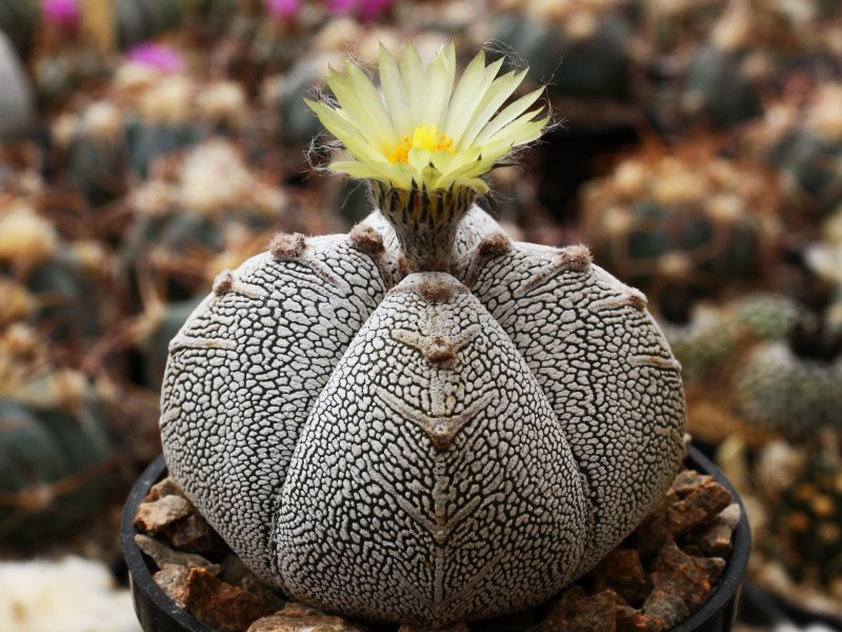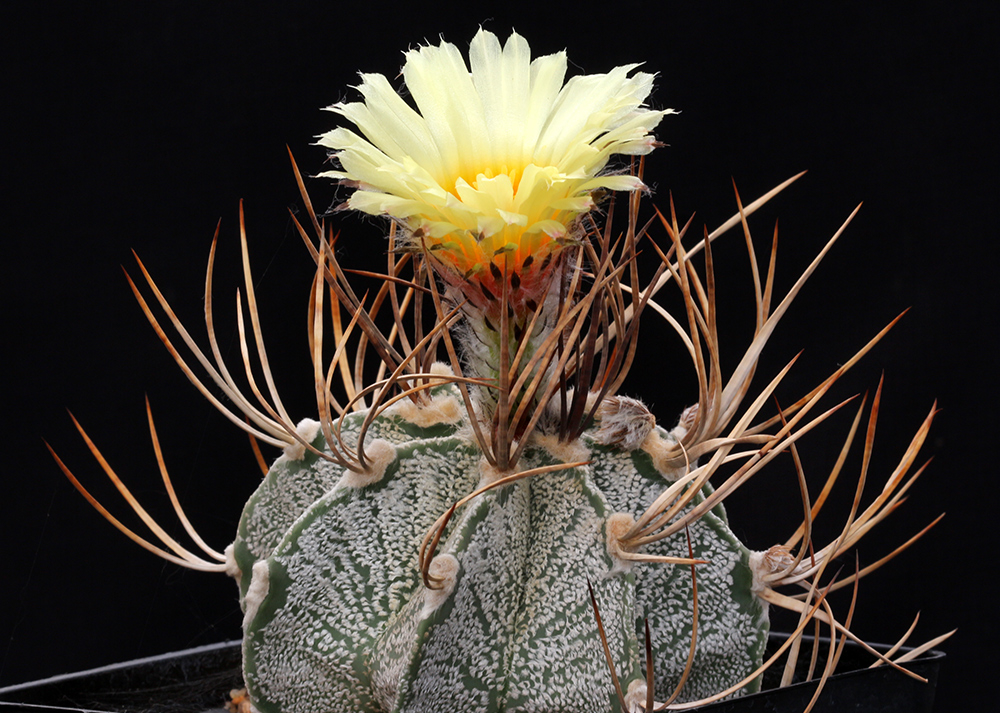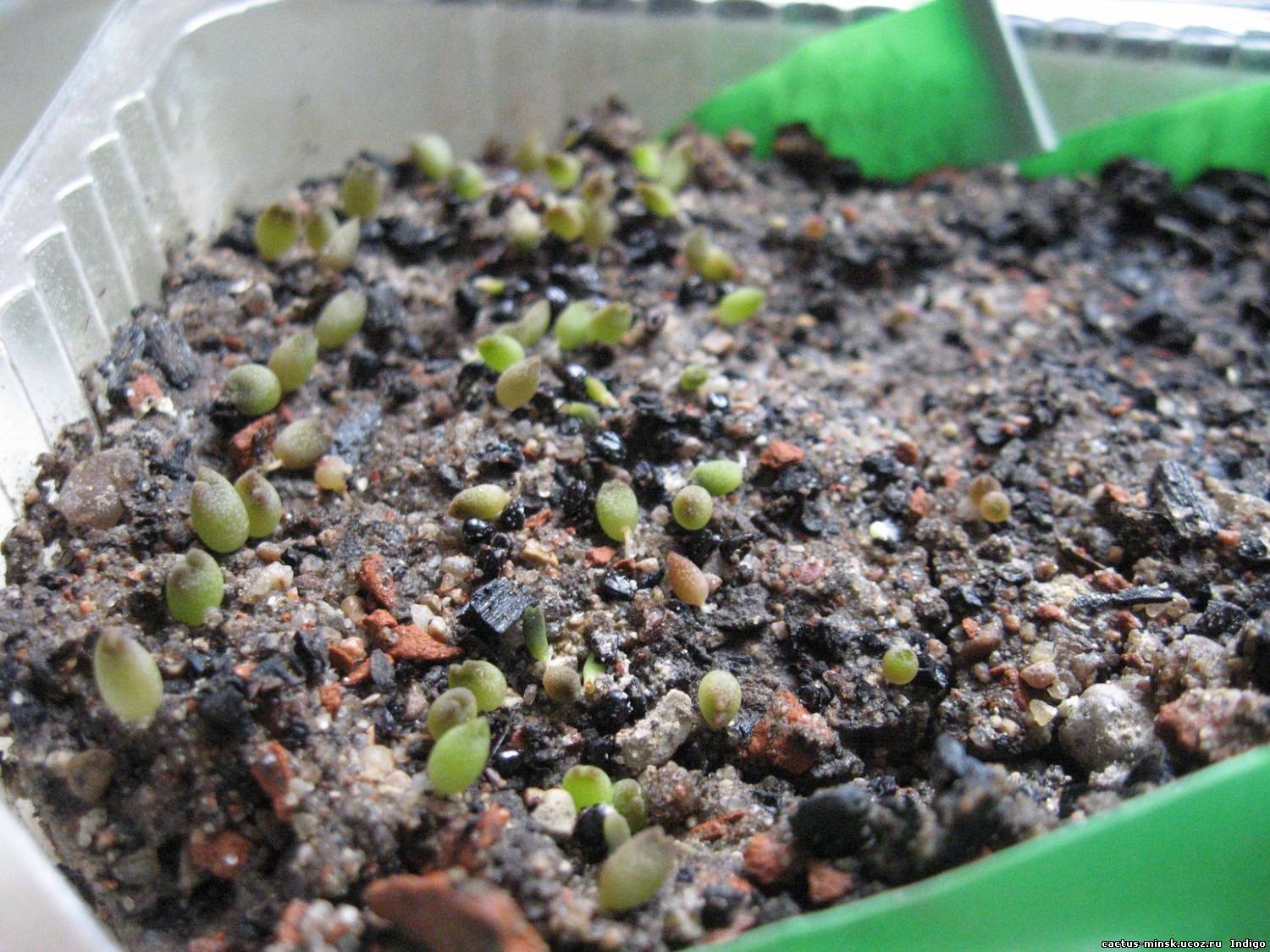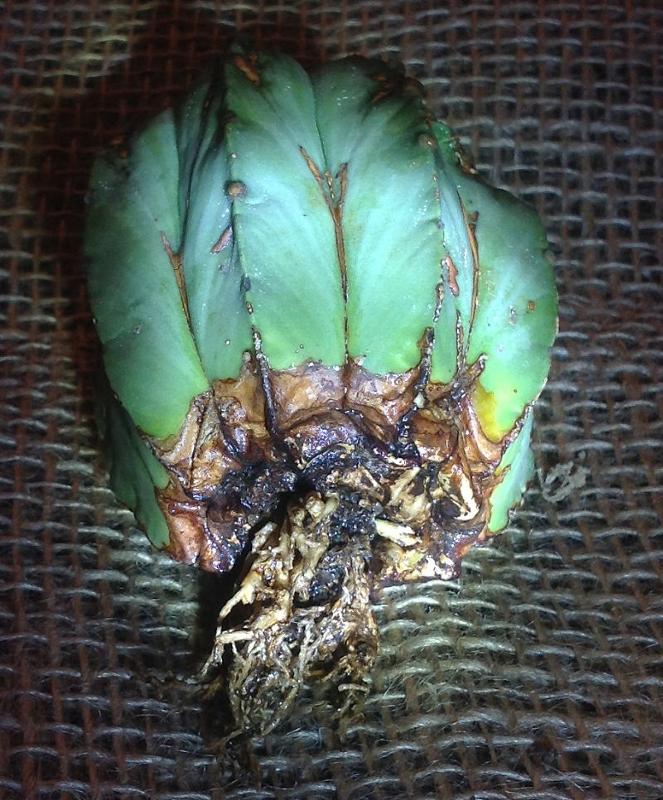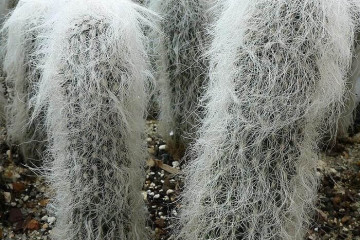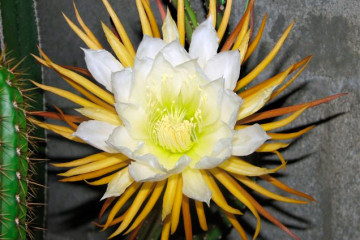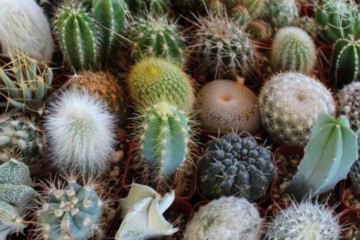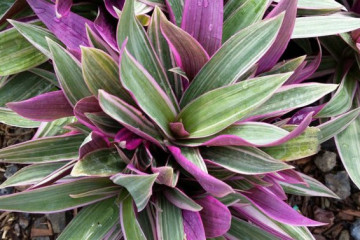Astrophytum cactus: different types of options and examples of home care
Content:
Even in the hottest regions of the world there are plants - cacti. They are able to withstand abnormal heat and extremely low humidity. People also breed some of their types of houses for decorative purposes. Like astrophytums, for example.
Types of cactus astrophytum
Astrophytums are succulents, that is, plants that can store moisture. The homeland of these particular cacti is the hot north of Mexico and the south of the United States. Outwardly, they resemble a ball, less often a cylinder.
If you look at the plant from above, due to the presence of ribs (there can be from three to ten), it will resemble a star. Therefore, sometimes he is called that.
Astrophytum is distinguished by the presence of specks on the surface. These specks are formed by special hairs that actively absorb moisture. Spines rarely grow on such flora.
These cacti grow slowly. They have a long flowering period from early spring to late autumn. The flower of astrophytum itself does not live long - only up to three days.
There are different types of this succulent. Each has its own difference.
Astrophytum Mirostigma
Astrophytum Mirostigma, or countless speckled, is the most famous type of these cacti. It has the shape of a ball of gray-blue color, while its top is slightly depressed inward. A flower blooms on it in the flowering phase. Astrophytum myriostigma has six ribs. This species does not have thorns, but it has a lot of specks.
In nature, it can reach a length of one meter, in a girth of more than 20 centimeters, astrophytum polypore (another name for it) does not exist. It has many interesting varieties:
- Nudum. There are almost no points on this variety that should absorb water in nature. They still remain, but there are few of them, they are already performing a strictly decorative function. The shape of the succulent is spherical, with moderately prominent edges.
- Kikko. These are cacti in the shape of a regular five-pointed star. They also have almost no specks - a distinctive feature of the species.
- Quadricostatus. Water-absorbing points were not removed from this variety. But the breeders have worked on the number of faces and the shape of succulents. The plant now has four edges and a square shape.
Astrophytum star
Star astrophytum is the most common species in homes. He is loved for his diminutiveness - in nature he can reach only 15 centimeters in diameter. Household cacti are even smaller. The ribs on them are most often 8.
Astrophytum asterias (the scientific name of this succulent) has a scattering of specks on each face. There are fewer of them, but they are larger than those of Mirostigma. At the same time, thorns on it also do not grow.
Speckled astrophytum
Astrophytum speckled has a smooth surface, on which fleecy dots are located in bulk. It is very similar to the view of Mirostigma, but has five faces.In the open field, the diameter of this succulent can reach 25 centimeters.
Astrophytum Capricorn
Astrophytum ibex is a cactus that has one of the most spectacular appearances. It got its name from the thorns that grow in rosettes on its edges. They are very long, curving upward, resembling the horns of goats. In Latin, such a plant is called astrophytum capricorne.
It can grow up to 17 centimeters in girth and 30 in height. It has eight faces, a scattering of small specks. Moreover, the points that absorb water are mainly located closer to the root or in the recesses between the edges.
Other types
There are a lot of cacti on the planet, all of them, one way or another, adapt to external conditions. This is the reason for such a variety of astrophytum species. Not only nature stimulates the emergence of new representatives of this genus. People are also working on the creation of new cactus plants. The set of methods by which new varieties and hybrids appear is called breeding.
Lesser known, but still worthy of human attention, astrophytums:
- Ornatum. Astrophytum ornatum is the very first astrophytum discovered by man. The dots on it are not entirely arranged, but in stripes, as if created artificially. It looks very unusual, which is why the succulent is nicknamed the decorated astrophytum. Thorns grow on it, which are located in rosettes along the ribs of the plant. The ribs themselves are often straight, but they can also twist around the axis of the plant.
- Astrophytum Coahuil. The Latin name for this cactus is astrophytum coahuilense. It is abundantly covered with specks. Its distinctive feature is the ability to safely endure higher temperatures. The plant feels fine even at 30 degrees Celsius.
- Astrophytum The head of a jellyfish. This type of cactus has an unusual appearance. The thing is that the form of astrophytum caput medusae (as scientists call him) is not a ball or a cylinder. Its edges resemble tentacles, branching in different directions. Immediately after its discovery, it was singled out as a separate genus Digitostigma.
How to care for astrophytum at home
These cacti are often kept at home. This is because astrophytum at home does not require special care, being an unpretentious plant. There are rules for handling this representative of the flora, but they are quite simple.
Lighting
This succulent plant comes from sunny locations. Therefore, when grown in a pot, it needs an abundance of light all year round. However, it is recommended to protect it from direct sunlight on a summer afternoon.
Humidity
Cacti grow where the air is very dry. Therefore, it is not required to additionally spray it and increase the humidity in the room.
Succulents must be watered. In summer, water is added as the soil dries up. In the fall, watering is reduced to once a month; in the winter, there is no need to water the cacti.
Priming
To obtain a substrate for succulents, you need to mix leaf and turf soils, peat and sand in equal proportions. Or just buy a ready-made mixture in the store.
Temperature
The temperature range for the comfortable existence of astrophytums is from 25 to 10 degrees Celsius. The first indicator is for flowering in summer, the second is for a dormant period in winter.
How astrophytum reproduces
You can not only buy cacti already grown, but also plant them yourself. You need to know exactly how to do it right.
Using seeds
To grow astrophytum on your own, you need to act in stages:
- Soak. Seeds should be soaked for 5-7 minutes before planting. Moreover, it is better not in water, but in a weak solution of potassium permanganate.
- Soil preparation. The soil for germinating cactus seeds should have the following composition: charcoal, sand, sheet soil in equal amounts.
- Creation of a greenhouse. The resulting substrate is laid out in a shallow tray, the seeds of astrophytum are planted in it. Stretch plastic wrap or glass over the tray to create a greenhouse. Be sure to open it from time to time to ventilate and water the planted. The greenhouse is kept at a temperature of 20 degrees Celsius.
The emerging sprouts can be transplanted into a pot with adult soil and drainage.
Difficulties in growing astrophytum cactus
Despite the fact that it is quite simple to keep a cactus, some problems with improper care can be:
- Brown spots. This indicates either that the watering of the cactus is insufficient, or that lime water was used for it.
- Lack of growth. The cactus stops growing either when there is not enough water, or when, on the contrary, there is too much moisture in winter.
- Rot at the roots. This is a sign of waterlogged soil.
How to feed and transplant astrophytum
For each plant, feeding and correct transplantation are important. The astrophytum cactus also needs these two factors.
For feeding, it is best to use special formulations for succulents. You can buy them at a flower shop. Experienced indoor plant lovers recommend feeding cacti once a month during the entire warm period.
These representatives of the flora should be replanted annually. Even with proper feeding, the soil is depleted, therefore it is recommended to replace it annually. When transplanting astrophytum, it should be borne in mind that it needs more calcium in the soil than other plants. Therefore, granite or marble chips are mixed into the ground. If they are not there, then a simple eggshell will do.
Growing astrophytums is easy. They require a minimum of human effort and time. Therefore, they are very fond of busy people who find it difficult to pay much attention to flowers.

